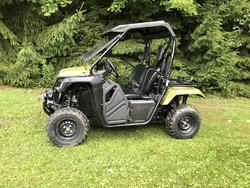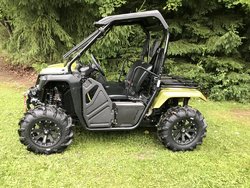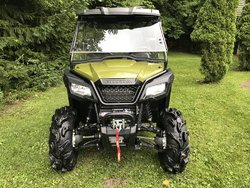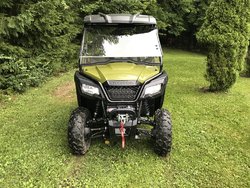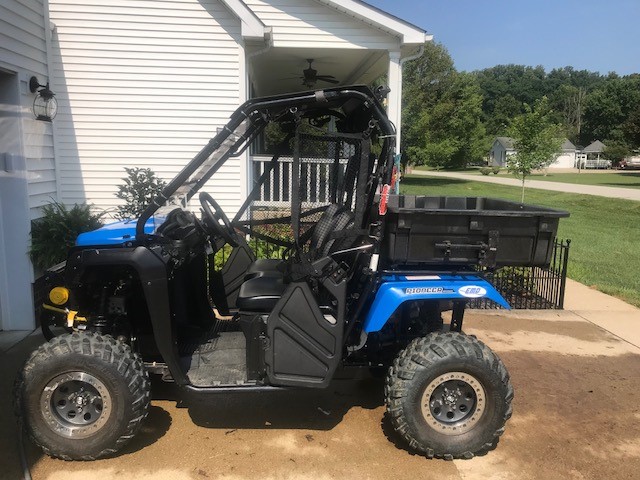What do you have the fronts (shocks) set at? And good idea to check to see if A arm pivot bolts are maybe too tight and binding. Might also be an optical illusion too, as the top of tire to fender distance is much more on the front, making the rear appear to squat. I’d measure front frame horns (inboard of front tires) each side to level ground and on rear too. Prior to measuring set the shocks same front to rear and take for a spin so it balances out first.
As noted above in 4x4 with different diameter tires (front to back), especially with larger rear ones the problem is the rear will “push” against the front drive train. So imagine going slight downhill with a tight corner at the bottom the machine will want to roll over more readily as the rear drive wheels are pushing (ground speed) faster then the fronts and may lever the rig over easier. You need to maintain same diameter tires at all corners, in fact I rotate my tires front to back on my P5.
j
It might just be an optical illusion due to the front fenders being so high. All of the shocks were at the lowest/softest setting. How do you know if the A arms are binding? I pushed up and down on the back and all seem to move free.
@trigger Is yours older? Mine is a '17. After riding with the suspension on softest and stiffest, it was noticeable. I ran all the same trails for a few hours on both settings and hit many large bumps at higher speeds but never felt like I was going to lose it on the stiffest setting.
As for the P5 being "tippy" with larger tires, I would definitely disagree. Through a couple deeply rutted trails and rocky creek crossings, it felt more stable with the 28's. In fact, I came way closer to rolling (like "O sh!t" close) in a creek with stockys than I did with the 28's going through the exact same spot over the exact same rocks. I did get the 0mm offset and believe that is +2 inches offset more than stock. I am sitting at 54".
